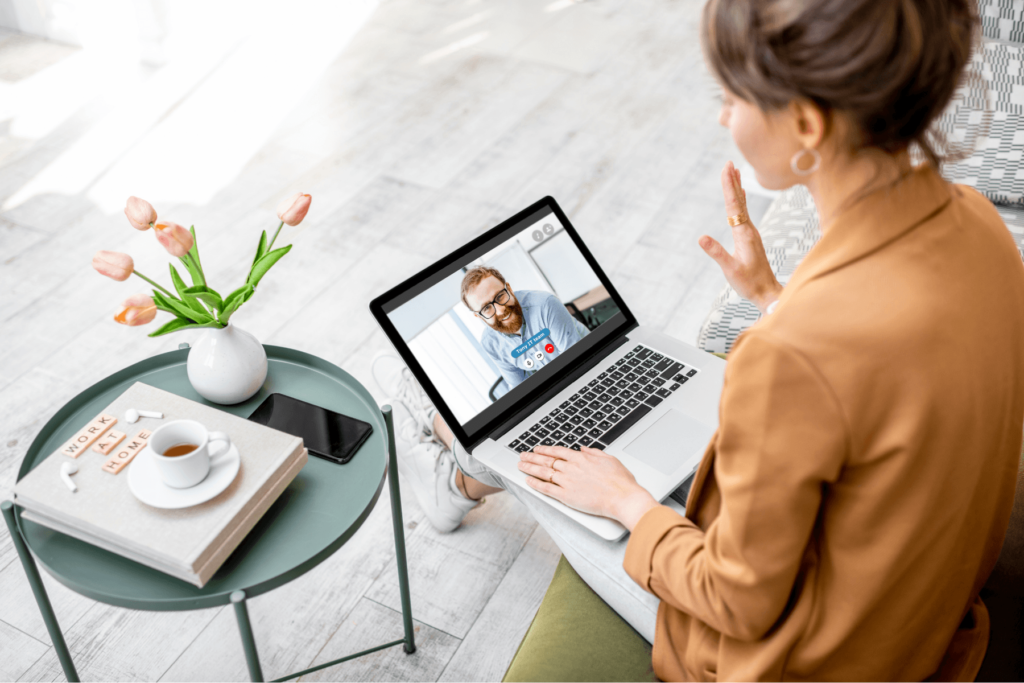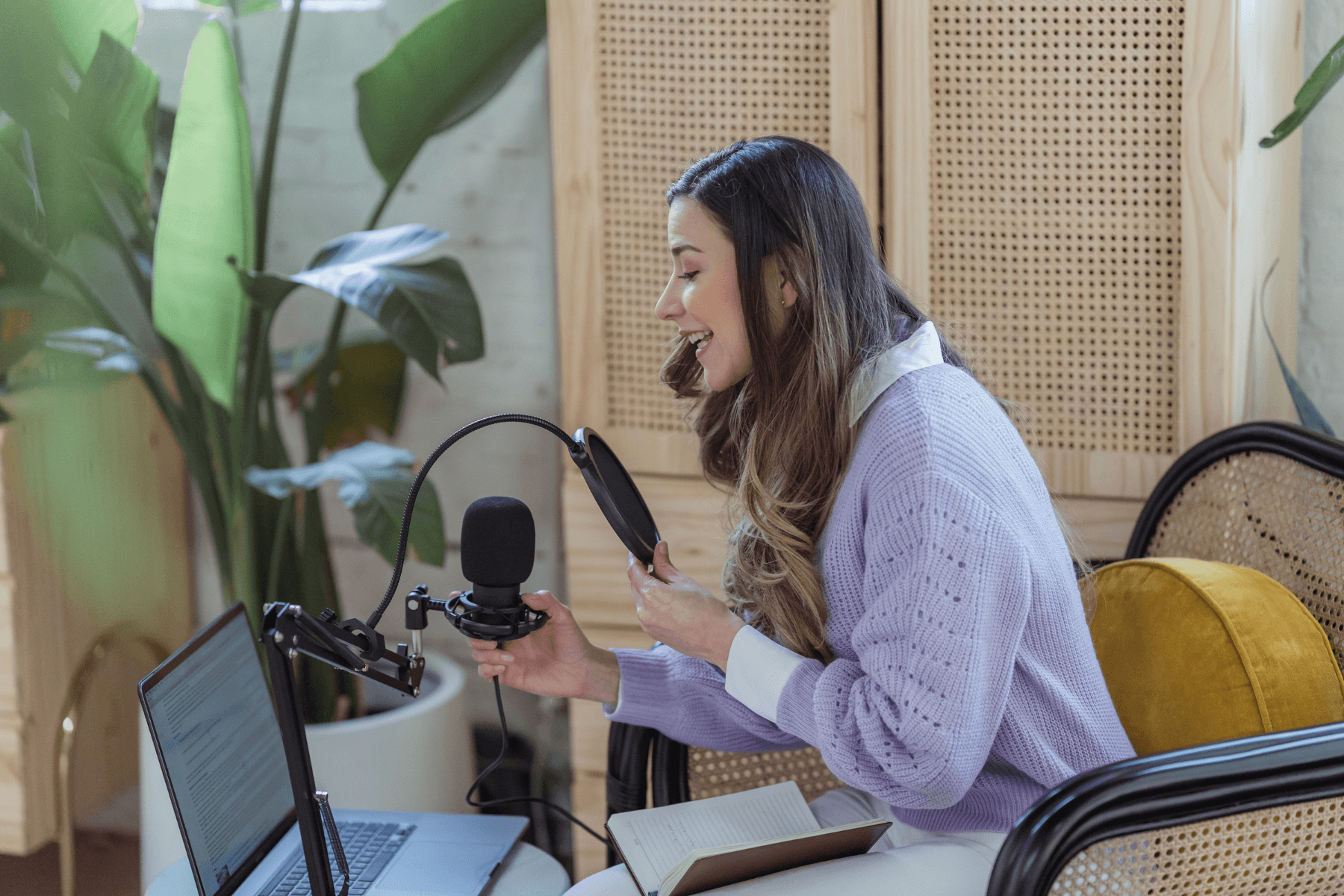Remote recording while your guests or co-hosts live across the world is a piece of cake. – Maybe. You can record podcasts from two different locations using four easy ways. – Let’s go!

By Niall Mackay
How often have you tried to record online podcast conversations and turned out…AWFUL?
The guest’s internet connection gets lost, you can’t hear what the other is saying… and you finally give up on remote podcasting.
Don’t lose hope! You finally got your answer on recording podcasts from two separate locations! Pick and choose one of the four ways to do remote podcasting and turn your show into a broad international podcast!
Can You Record A Podcast From Two Locations?
Recording a podcast remotely while your guests or co-hosts live across the world is a piece of cake. – Maybe. You can record podcasts from two different locations using four easy ways that fit you the best.
To record a podcast remotely, you can choose:
- Record the audio locally and edit the quality later on
- Record the whole podcast episode through an online podcast platform
- Record using video chat or conferencing applications like Skype or Zoom
- Record the show with an audio mixer
You got your options, but which one is the best way to record a kickass podcast episode from two locations? Keep on reading!
Remote Recording – Best Ways To Record A Podcast From Two Different Locations
Record The Audio Locally
How do you record your audio locally? Grab your microphone and headphones, call your guests, and save the audio right on your computer once the conversation is made. This is what local audio saving means.
You have to prepare your guests in advance, especially if they are new to remote podcasting, to do this effectively.
So make sure they also have a microphone and a pair of headphones during the speech, plus they know how to save their audio on their computer.
Why should you record audio locally?
Locally saving audio is the best way to control the podcast episode quality! When you record the audio to your computer, you have an easier time cutting all the filler words (i.e., uh, ah, um) and other background noises.
A few downsides are that you and your guests should have the technical knowledge to set this up, plus own a good microphone and headphones to keep the quality of the recording high.
To record your audio locally, you have to have:
- Audio editing software
- A good podcasting microphone
- A podcasting studio is set up in your room for a quiet recording time
- Call your guest via any video conferencing software such as Zoom.
This method is the best for recording a podcast from two locations. One thing to watch out for is to use a visual marker at the start of the conversations so that they don’t become too complicated when you match up the tracks.
Record Using Online Recording Platforms
What if you record the podcast interview remotely just as you did with local saving, but you do NOT have to align tracks?
Wouldn’t that save you a ton of time?
Here is when the online recording comes in. Since COVID-19 hit, we all went remote, Zencastr, Squadcast, and made our podcasting life a lot easier. These websites and apps record your speech and automatically sync your conversation and your online guests’ speech.
What you need for online recording platforms is
- A strong internet connection on both ends
- A good podcasting microphone
- A quiet space
The only downfall here is that the audio quality heavily depends on the internet connection on your side and your guest’s side. If your remote guest has an awful internet connection, you should not rely on this method.

Record Using Video Calls
We mentioned having good-quality microphones in the past two methods, but what if your guest does not have a good microphone? You can’t blame them, and you need their conversation.
So, jump on a video call or conference and cover that up.
Using Zoom, Skype, or eCamm and recording the whole call saves you a ton of time, and your guests do not need any technical skills whatsoever…
The only downfall is that the audio quality will be significantly lower compared to local audio saving or online platforms.
What you have to have for the video call method:
- Good internet connection on both ends
- A quiet space
- Pick a video call application (Zoom or Skype)
Record Using A Mixer
Suppose your guest prefers phone calls and you happen to have a mixer at home. – Now it is time to use it for its full potential!
The last option for good remote podcasting is using a mixer. It doesn’t have to be an advanced one. Traditional mixers will do well too.
You have to integrate phone calls and other audio into your recording for this remote podcasting scenario.
The set-up is effortless. All you have to do is plug your phone into the mixer and let the mixer pick up the sounds.
In other words, your mixer will act as the video editing tool in the previous example. However, your guest does not need any special equipment (i.e., microphones, headphones, or even a laptop!) other than their cell phone.
The downside of using a mixer is that generally, mixers are expensive for beginners, and you cannot guarantee high-quality audio recording from the guest’s phone.
The Best Way To Record Audio From Two Locations
I collected four common ways to record audio from two different locations! The best possible audio quality throughout the online speech is still saving the sounds locally. You have complete control over the audio if you and your guests have the right equipment.
Alternatively, I recommend online platforms as they act similarly to the first method but require even more minor editing later!
Podcast Hosting Service
You don’t have any experience in recording podcasts online and you find it hard to do so? No worries, our Podcast Hosting Service will provide you with a remote recording without compromising on quality. Our studio-quality lighting and top-notch microphones guarantee a professional touch to every moment.


